Infection of the mammary glands. Mastitis: Symptoms, Causes, and Treatments for Breast Infections
What are the common symptoms of mastitis. How is mastitis diagnosed and treated. Can mastitis be prevented. What complications can arise from untreated breast infections.
Understanding the Anatomy of the Breast
The breast is a complex organ composed of various glands and ducts. At its core are milk-carrying ducts that extend from the nipple into the underlying breast tissue, resembling the spokes of a wheel. Beneath the areola, the colored area surrounding the nipple, lie lactiferous ducts which fill with milk during lactation. As girls reach puberty, hormonal changes cause these ducts to grow and increase fat deposits in the breast tissue.
Mammary glands, responsible for milk production, connect to the breast’s surface via lactiferous ducts and may extend to the armpit area. This intricate network of ducts and glands plays a crucial role in milk production and delivery during breastfeeding, but it can also be susceptible to infections like mastitis.
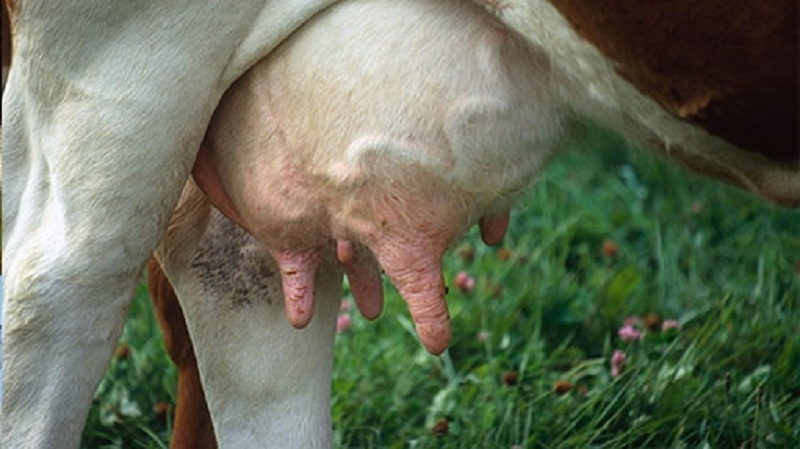
What is Mastitis and Who is at Risk?
Mastitis is an infection of the breast tissue that most commonly occurs during breastfeeding. It typically develops when bacteria, often from the baby’s mouth, enter a milk duct through a cracked nipple. While mastitis primarily affects breastfeeding women, it can also occur in non-lactating women and even postmenopausal individuals.
Who is most susceptible to mastitis?
- Breastfeeding mothers (1-3% develop mastitis)
- Women with diabetes
- Individuals with chronic illnesses
- Those with AIDS or impaired immune systems
- Postmenopausal women (due to hormonal changes)
Factors that can contribute to the development of mastitis include engorgement, incomplete breast emptying, and chronic inflammation of the ducts below the nipple. In postmenopausal women, hormonal changes can cause milk ducts to become clogged with dead skin cells and debris, making the breast more susceptible to bacterial infection.
Recognizing the Symptoms of Mastitis
Mastitis can present with a range of symptoms, some of which may be similar to other conditions. It’s essential to recognize these signs early for prompt treatment.

What are the common symptoms of mastitis?
- Pain, redness, and warmth in the affected breast
- Tenderness and swelling
- Body aches and fatigue
- Breast engorgement
- Fever and chills
In some cases, mastitis can progress to form an abscess, a more serious complication. Signs of an abscess may include:
- A tender lump in the breast that doesn’t shrink after breastfeeding
- Pus draining from the nipple
- Persistent fever
- No improvement of symptoms within 48-72 hours of treatment
When to Seek Medical Care for Breast Infections
Knowing when to consult a healthcare provider is crucial for managing mastitis effectively. Early intervention can prevent complications and ensure a faster recovery.
When should you contact your healthcare provider?
- If you feel any suspicious lump in your breast, whether breastfeeding or not
- When you notice abnormal discharge from your nipples
- If breast pain is interfering with your daily activities
- When you experience prolonged, unexplained breast pain
- If you have symptoms such as redness, swelling, or pain that interferes with breastfeeding
- When you notice a mass or tender lump in the breast that doesn’t disappear after breastfeeding
Some symptoms may require immediate medical attention or evaluation in an emergency department:

- Persistent high fever greater than 101.5°F
- Nausea or vomiting preventing you from taking prescribed antibiotics
- Pus draining from the breast
- Red streaks extending toward your arm or chest
- Dizziness, fainting, or confusion
Diagnosing Mastitis and Breast Abscesses
Accurate diagnosis is essential for effective treatment of mastitis and potential complications like breast abscesses. Healthcare providers use various methods to identify and assess these conditions.
How is mastitis typically diagnosed?
In most cases, mastitis can be diagnosed based on a physical examination. The healthcare provider will assess symptoms such as breast pain, redness, and swelling, along with any systemic symptoms like fever.
What additional tests might be used to diagnose breast infections?
- Ultrasound: This non-invasive test can help distinguish between simple mastitis and an abscess, especially if the abscess is deep in the breast tissue. It allows the doctor to visualize the internal structures of the breast.
- Cultures: Samples of breast milk or fluid from an abscess may be cultured to identify the specific bacteria causing the infection and determine the most effective antibiotic treatment.
- Mammogram or breast MRI: In some cases, these imaging tests may be used to rule out other conditions or to get a more detailed view of the breast tissue.
If an abscess is suspected, aspiration (using a needle to remove fluid) or surgical drainage may be necessary for both diagnostic and treatment purposes.

Treatment Options for Mastitis and Breast Abscesses
The treatment of mastitis aims to resolve the infection, alleviate symptoms, and prevent complications. The approach may vary depending on the severity of the infection and whether an abscess has formed.
What are the primary treatment options for mastitis?
- Antibiotics: Oral antibiotics are typically the first-line treatment for mastitis. The course usually lasts 10-14 days.
- Pain relief: Over-the-counter pain medications like ibuprofen or acetaminophen can help manage pain and reduce fever.
- Continued breastfeeding or pumping: This helps prevent engorgement and promotes healing.
- Warm compresses: Applying warm, moist compresses to the affected breast can help relieve pain and promote milk flow.
- Rest and hydration: Adequate rest and increased fluid intake support the body’s healing process.
How are breast abscesses treated?
If an abscess has formed, additional interventions may be necessary:
- Needle aspiration: A needle is used to drain the abscess under ultrasound guidance.
- Surgical drainage: For larger or persistent abscesses, a small incision may be made to drain the pus.
- Intravenous antibiotics: In severe cases, antibiotics may be administered intravenously.
It’s important to note that while antibiotics are effective against bacterial infections, they may not always be necessary for mild cases of mastitis. Some cases may resolve with conservative measures like frequent breast emptying and pain management.

Home Remedies and Self-Care for Mastitis
In addition to medical treatments, several home remedies and self-care strategies can help manage mastitis symptoms and support recovery.
What home remedies can help alleviate mastitis symptoms?
- Frequent breastfeeding or pumping to keep the breast empty
- Massaging the affected area before and during feedings to promote milk flow
- Applying cold packs after feedings to reduce pain and swelling
- Wearing a supportive, well-fitting bra
- Getting plenty of rest and staying hydrated
- Using different breastfeeding positions to fully drain the breast
These self-care measures can be particularly effective when combined with prescribed medical treatments. However, if symptoms persist or worsen despite home care, it’s crucial to consult a healthcare provider.
Preventing Mastitis and Recurrent Breast Infections
While not all cases of mastitis can be prevented, certain practices can reduce the risk of developing breast infections, especially for breastfeeding mothers.

How can you reduce the risk of mastitis?
- Ensure proper latch and positioning during breastfeeding
- Fully drain breasts during each feeding
- Avoid prolonged engorgement
- Allow nipples to air dry after feedings
- Avoid tight-fitting bras or those with underwires
- Practice good hygiene, washing hands before handling breasts
- Treat cracked or sore nipples promptly
- Wean gradually rather than abruptly
For non-breastfeeding women, maintaining overall breast health through regular self-exams and addressing any breast changes promptly can help prevent infections.
Chronic or recurrent mastitis may require further investigation to identify underlying causes. In some cases, lactation consultants or specialists may provide additional guidance on prevention strategies.
Long-Term Outlook for Breast Infections
The prognosis for mastitis is generally good when treated promptly and appropriately. Most cases resolve within a few weeks with proper treatment. However, untreated or inadequately treated mastitis can lead to complications.

What potential complications can arise from untreated breast infections?
- Formation of breast abscesses
- Chronic mastitis
- Sepsis (in rare, severe cases)
- Difficulties with breastfeeding
It’s important to note that while mastitis can be painful and distressing, it does not increase the risk of breast cancer. However, inflammatory breast cancer, a rare and aggressive form of breast cancer, can sometimes mimic the symptoms of mastitis. This underscores the importance of proper diagnosis and follow-up care.
Addressing Concerns About Breastfeeding with Mastitis
Many breastfeeding mothers worry about the safety of continuing to nurse when they have mastitis. However, experts generally recommend continuing to breastfeed or express milk during treatment.
Is it safe to breastfeed while treating mastitis?
Yes, in most cases, it is safe and beneficial to continue breastfeeding or expressing milk while being treated for mastitis. The antibiotics prescribed for mastitis are typically safe for breastfeeding infants. Continuing to nurse can help:
- Prevent engorgement, which can worsen symptoms
- Clear blocked ducts
- Maintain milk supply
- Provide comfort to the infant
If breastfeeding is too painful, using a breast pump to express milk can help maintain supply and prevent engorgement while the infection clears.

The Role of Lactation Consultants in Managing Mastitis
Lactation consultants can be valuable resources for breastfeeding mothers dealing with mastitis. These professionals specialize in breastfeeding support and can provide personalized advice and techniques.
How can a lactation consultant help with mastitis?
- Assess breastfeeding technique and latch
- Recommend positioning changes to improve milk drainage
- Demonstrate massage techniques to clear blocked ducts
- Provide guidance on pumping and milk expression
- Offer strategies for managing pain and discomfort
- Support emotional well-being during the recovery process
Working with a lactation consultant can not only help resolve current issues but also prevent future occurrences of mastitis.
Understanding Different Types of Mastitis
While lactational mastitis is the most common form, there are other types of breast infections that can affect women at different stages of life.
What are the different types of mastitis?
- Lactational mastitis: Occurs in breastfeeding women
- Non-lactational mastitis: Can occur in women who are not breastfeeding
- Periductal mastitis: Inflammation of the ducts beneath the nipple, more common in smokers
- Granulomatous mastitis: A rare, chronic form of mastitis
Each type may require slightly different approaches to treatment and management. Accurate diagnosis is crucial for determining the most effective course of action.
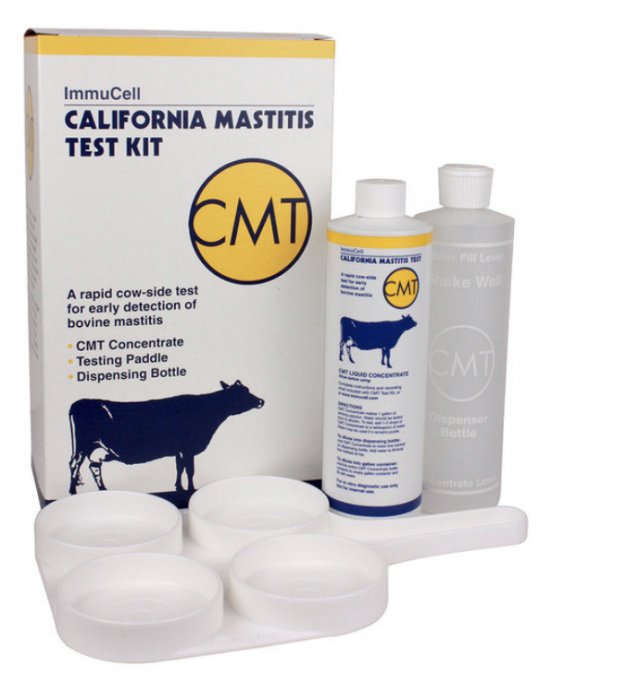
The Impact of Mastitis on Milk Supply and Infant Health
A common concern among breastfeeding mothers with mastitis is how the infection might affect their milk supply and their baby’s health.
Does mastitis affect milk supply or milk quality?
Mastitis can temporarily affect milk supply in the infected breast, but this usually resolves as the infection clears. The quality of breast milk generally remains good, and continuing to breastfeed is often recommended. In fact, the antibodies in the milk may help protect the baby from the infection.
Is it safe for the baby to drink milk from a breast with mastitis?
Yes, it is generally safe for babies to continue nursing from a breast affected by mastitis. The infection is in the breast tissue, not in the milk itself. However, if an abscess has formed and is draining, it’s best to avoid feeding from that breast until it heals.
Coping with the Emotional Impact of Mastitis
Dealing with mastitis can be physically and emotionally challenging, especially for new mothers who are already adjusting to the demands of caring for a newborn.

How can you manage the emotional stress of mastitis?
- Seek support from family, friends, or support groups
- Communicate openly with your healthcare provider about your concerns
- Practice self-care and prioritize rest
- Remember that mastitis is common and treatable
- Consider talking to a counselor or therapist if you’re feeling overwhelmed
Acknowledging and addressing the emotional impact of mastitis is an important part of the recovery process.
Future Research and Developments in Mastitis Treatment
As our understanding of breast infections evolves, researchers continue to explore new approaches to prevention and treatment.
What are some areas of ongoing research in mastitis management?
- Development of probiotic treatments to prevent and treat mastitis
- Investigation of the role of the breast microbiome in infection susceptibility
- Exploration of alternative antibiotic delivery methods to improve efficacy
- Studies on the long-term effects of recurrent mastitis on breast health
These research efforts aim to improve outcomes for women affected by mastitis and may lead to more targeted and effective treatments in the future.

In conclusion, mastitis is a common but manageable condition that affects many women, particularly during breastfeeding. Understanding its symptoms, causes, and treatment options is crucial for prompt and effective management. While it can be challenging, with proper care and support, most women recover fully and can continue their breastfeeding journey if they choose to do so. Always consult with healthcare providers for personalized advice and treatment plans.
Breast Infection (Mastitis): Symptoms, Causes, Treatments
Written by WebMD Editorial Contributors
- How the Breast Is Built
- Breast Infection Causes
- Breast Infection Symptoms
- When to Seek Medical Care
- Breast Infection Exams and Tests
- Breast Infection Treatment
- Breast Infection Home Remedies
- Medications for Mastitis
- Surgery for an Abscess
- Next Steps
- Follow-Up Care After a Breast Infection
- Mastitis Prevention
- Outlook for Breast Infections
- More
The breast is composed of several glands and ducts that lead to the nipple and the surrounding colored area called the areola. The milk-carrying ducts extend from the nipple into the underlying breast tissue like the spokes of a wheel. Under the areola are lactiferous ducts. These fill with milk during lactation after a woman has a baby. When a girl reaches puberty, changing hormones cause the ducts to grow and cause fat deposits in the breast tissue to increase. The glands that produce milk (mammary glands) that are connected to the surface of the breast by the lactiferous ducts may extend to the armpit area.
The glands that produce milk (mammary glands) that are connected to the surface of the breast by the lactiferous ducts may extend to the armpit area.
Mastitis is an infection of the tissue of the breast that occurs most frequently during the time of breastfeeding. It can occur when bacteria, often from the baby’s mouth, enter a milk duct through a crack in the nipple.
Breast infections most commonly occur one to three months after the delivery of a baby, but they can occur in women who have not recently delivered and in women after menopause. Other causes of infection include chronic mastitis and a rare form of cancer called inflammatory carcinoma.
In healthy women, mastitis is rare. However, women with diabetes, chronic illness, AIDS, or an impaired immune system may be more susceptible.
About 1%-3% of breastfeeding mothers develop mastitis. Engorgement and incomplete breast emptying can contribute to the problem and make the symptoms worse.
Chronic mastitis occurs in women who are not breastfeeding. In postmenopausal women, breast infections may be associated with chronic inflammation of the ducts below the nipple. Hormonal changes in the body can cause the milk ducts to become clogged with dead skin cells and debris. These clogged ducts make the breast more open to bacterial infection. Infection tends to come back after treatment with antibiotics.
In postmenopausal women, breast infections may be associated with chronic inflammation of the ducts below the nipple. Hormonal changes in the body can cause the milk ducts to become clogged with dead skin cells and debris. These clogged ducts make the breast more open to bacterial infection. Infection tends to come back after treatment with antibiotics.
Breast infections may cause pain, redness, and warmth of the breast along with the following symptoms:
- Tenderness and swelling
- Body aches
- Fatigue
- Breast engorgement
- Fever and chills
- Abscess: A breast abscess can be a complication of mastitis. Noncancerous masses such as abscesses are more often tender and frequently feel mobile beneath the skin. The edge of the mass is usually regular and well defined. Indications that this more serious infection has occurred include the following:
- Tender lump in the breast that does not get smaller after breastfeeding a newborn (If the abscess is deep in the breast, you may not be able to feel it.
 )
) - Pus draining from the nipple
- Persistent fever and no improvement of symptoms within 48-72 hours of treatment
- Tender lump in the breast that does not get smaller after breastfeeding a newborn (If the abscess is deep in the breast, you may not be able to feel it.
Call your health care provider as soon as you feel any suspicious lump, whether you are breastfeeding or not. Call for an appointment if:
- You have any abnormal discharge from your nipples.
- Breast pain is making it difficult for you to function each day.
- You have prolonged, unexplained breast pain.
- You have any other associated symptoms such as redness, swelling, pain that interferes with breastfeeding, a mass or tender lump in the breast that does not disappear after breastfeeding.
- If you are breastfeeding, call your doctor if you develop any symptoms of breast infection so that treatment may be started promptly.
You may need to be evaluated in a hospital’s emergency department if the breast pain is associated with other signs of an infection (such as a fever, swelling, or redness to the breast) and if your health care provider cannot see you promptly. The below symptoms require emergency treatment:
The below symptoms require emergency treatment:
- A persistent high fever greater than 101.5°F
- Nausea or vomiting that is preventing you from taking the antibiotics as prescribed
- Pus draining from the breast
- Red streaks extending toward your arm or chest
- Dizziness, fainting, or confusion
The diagnosis of mastitis and a breast abscess can usually be made based on a physical exam.
- If it is unclear whether a mass is due to a fluid-filled abscess or to a solid mass such as a tumor, a test such as an ultrasound may be done. An ultrasound may also be helpful in distinguishing between simple mastitis and abscess or in diagnosing an abscess deep in the breast. This noninvasive test allows your doctor to directly visualize the abscess by placing an ultrasound probe over your breast. If an abscess is confirmed, aspiration or surgical drainage, and IV antibiotics, are often required.
- Cultures may be taken, either of breast milk or of material taken out of an abscess through a syringe, to determine the type of organism causing the infection.
 This information can help your doctor decide what kind of antibiotic to use.
This information can help your doctor decide what kind of antibiotic to use. - Nonbreastfeeding women with mastitis, or those who do not respond to treatment, may have a mammogram or breast biopsy. This is a precautionary measure because a rare type of breast cancer can produce symptoms of mastitis.
Breast infections require treatment by a health care provider.
After you see a doctor, try the following to help your breast infection heal.
- Pain medication: Take acetaminophen (Tylenol) or ibuprofen (such as Advil) for pain. These drugs are safe while breastfeeding and will not harm your baby. Your doctor may prescribe a prescription strength pain reliever if your pain is severe and not relieved with over-the-counter medication.
- In mild cases of mastitis, antibiotics may not be prescribed at all. If you are prescribed antibiotics, finishing the prescription even if you feel better in a few days is very important.
- Frequent feedings: Do not stop breastfeeding from the affected breast, even though it will be painful and you may be taking antibiotics.
 Frequent emptying of the breast prevents engorgement and clogged ducts that can only make mastitis worse.
Frequent emptying of the breast prevents engorgement and clogged ducts that can only make mastitis worse.- If needed, use a breast pump to relieve pressure and completely empty the breast.
- You can also breastfeed from the unaffected side and supplement with infant formula as needed.
- The infection will not harm the baby because the germs that caused the infection probably came from the baby’s mouth in the first place.
- Breastfeeding should be avoided in the infected breast when an abscess is present.
- Pain relief: A warm compress applied before and after feedings can often provide some relief. A warm bath may work as well.
- If heat is ineffective, ice packs applied after feedings may provide some comfort and relief.
- Avoid using ice packs just before breastfeeding because it can slow down milk flow.
- Drink plenty of water — at least 10 glasses a day. Eat well-balanced meals and add 500 extra calories a day while breastfeeding.
 Dehydration and poor nutrition can decrease milk supply and make you feel worse.
Dehydration and poor nutrition can decrease milk supply and make you feel worse.
For simple mastitis without an abscess, oral antibiotics are prescribed. Cephalexin (Keflex) and dicloxacillin (Dycill) are two of the most common antibiotics chosen, but a number of others are available. The antibiotic prescribed will depend on your specific situation, your doctor’s preference, and any drug allergies you may have. This medicine is safe to use while breastfeeding and will not harm the baby.
Chronic mastitis in nonbreastfeeding women can be complicated. Recurrent episodes of mastitis are common. Occasionally, this type of infection responds poorly to antibiotics. Therefore, close follow-up with your doctor is mandatory.
If the infection worsens in spite of oral antibiotics or if you have a deep abscess requiring surgical treatment, you may be admitted to the hospital for IV antibiotics.
If an abscess is present, it must be drained. After injection of a local anesthetic, the doctor may drain an abscess near the surface of the skin either by aspiration with a needle and syringe or by using a small incision. This can be done in the doctor’s office or emergency department.
This can be done in the doctor’s office or emergency department.
If the abscess is deep in the breast, however, it may require surgical drainage in the operating room. This procedure is usually done under general anesthesia to minimize pain and completely drain the abscess. Antibiotics and heat on the area are also used to treat abscesses.
Mastitis does not cause cancer, but cancer can mimic mastitis in appearance. If a breast infection is slow to go away, your health care provider may recommend a mammogram or other tests to rule out cancer.
If you have a breast infection, you may be seen for a recheck in 24-48 hours.
- Take all antibiotics as prescribed.
- Take your temperature three times a day for the first 48 hours after treatment begins. Watch for fever.
- Call your doctor if you develop a high fever, vomiting, or increasing redness, swelling, or pain in the breast.
- Follow up with your doctor in one to two weeks to make sure that the infection has gone away.
 If the infection spreads or an abscess develops, you may require IV antibiotics or surgical treatment.
If the infection spreads or an abscess develops, you may require IV antibiotics or surgical treatment.
Sometimes mastitis is unavoidable. Some women are more susceptible than others, especially those who are breastfeeding for the first time. In general, good habits to prevent mastitis include the following:
- Breastfeed equally from both breasts.
- Empty breasts completely to prevent engorgement and blocked ducts.
- Use good breastfeeding techniques to prevent sore, cracked nipples.
- Allow sore or cracked nipples to air dry.
- Prevent moisture from accumulating in breast pads or bras.
- Avoid dehydration by drinking plenty of fluids.
- Practice careful hygiene: Handwashing, cleaning the nipples, keeping your baby clean.
When treated promptly, the majority of breast infections go away quickly and without serious complications. Most women can and should continue to breastfeed despite an episode of uncomplicated mastitis. With proper treatment, symptoms should begin to resolve within one to two days.
With proper treatment, symptoms should begin to resolve within one to two days.
A breast abscess may require surgical drainage, IV antibiotics, and a short hospital stay. A small incision is made and usually heals quite well. Prognosis for complete recovery is also good.
Postmenopausal women with breast abscesses have a high rate of return after simple drainage and frequently need to follow up with a surgeon for more definitive treatment. Chronic infection can result if an abscess is not completely drained, and this can result in a poor cosmetic outcome.
Top Picks
Breast Infection: A Review of Diagnosis and Management Practices
1. Amir LH. ABM clinical protocol #4: Mastitis, revised March 2014. Breastfeed Med. 2014;9:239–243. doi: 10.1089/bfm.2014.9984. [PMC free article] [PubMed] [CrossRef] [Google Scholar]
Amir LH. ABM clinical protocol #4: Mastitis, revised March 2014. Breastfeed Med. 2014;9:239–243. doi: 10.1089/bfm.2014.9984. [PMC free article] [PubMed] [CrossRef] [Google Scholar]
2. Rizzo M, Gabram S, Staley C, Peng L, Frisch A, Jurado M, Umpierrez G. Management of breast abscesses in nonlactating women. Am Surg. 2010;76:292–295. [PubMed] [Google Scholar]
3. Efrat M, Mogilner JG, Iujtman M, Eldemberg D, Kunin J, Eldar S. Neonatal mastitis–diagnosis and treatment. Isr J Med Sci. 1995;31:558–560. [PubMed] [Google Scholar]
4. Bharat A, Gao F, Aft RL, Gillanders WE, Eberlein TJ, Margenthaler JA. Predictors of primary breast abscesses and recurrence. World J Surg. 2009;33:2582–2586. doi: 10.1007/s00268-009-0170-8. [PMC free article] [PubMed] [CrossRef] [Google Scholar]
5. Dixon JM, Khan LR. Treatment of breast infection. Bmj. 2011;342:d396. doi: 10.1136/bmj.d396. [PubMed] [CrossRef] [Google Scholar]
6. Scott-Conner CE, Schorr SJ. The diagnosis and management of breast problems during pregnancy and lactation.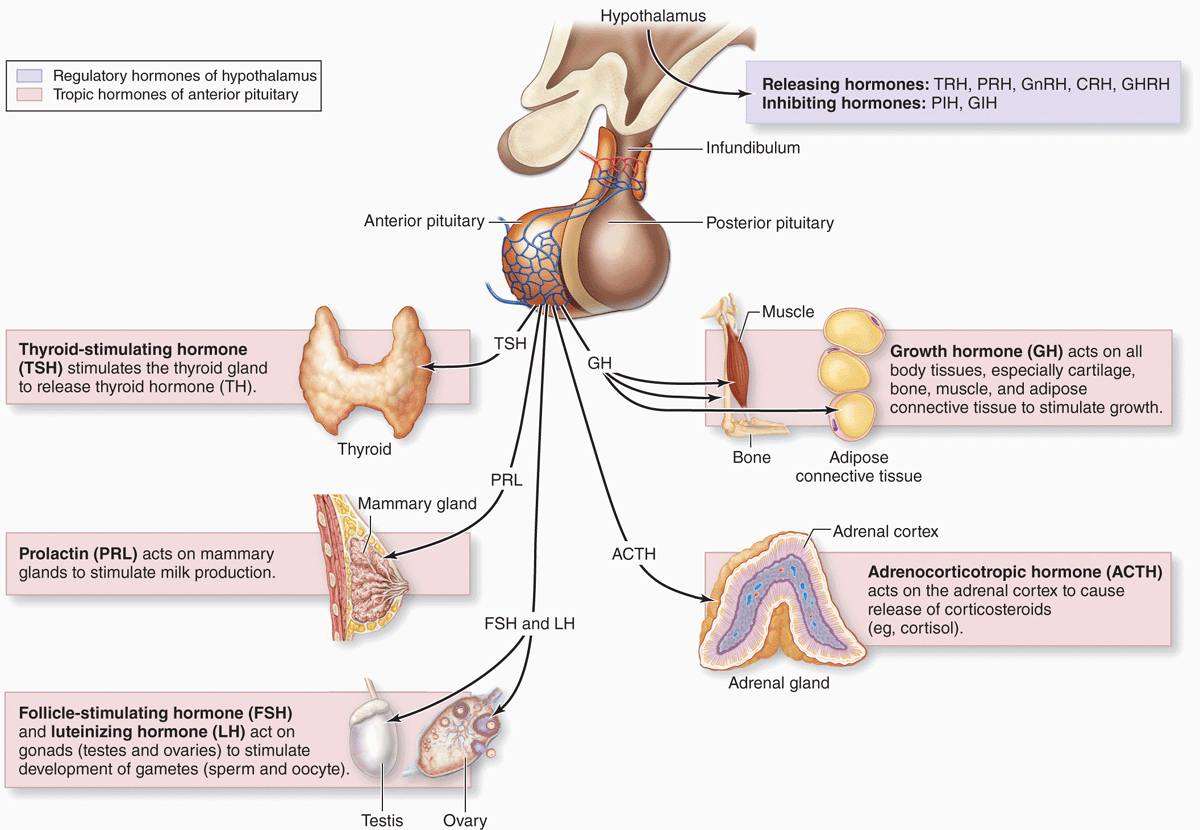 Am J Surg. 1995;170:401–405. doi: 10.1016/S0002-9610(99)80313-4. [PubMed] [CrossRef] [Google Scholar]
Am J Surg. 1995;170:401–405. doi: 10.1016/S0002-9610(99)80313-4. [PubMed] [CrossRef] [Google Scholar]
7. Organisation WH. Causes and management. 2000. Mastitis. [Google Scholar]
8. Foxman B, D’Arcy H, Gillespie B, Bobo JK, Schwartz K. Lactation mastitis: occurrence and medical management among 946 breastfeeding women in the United States. Am J Epidemiol. 2002;155:103–114. doi: 10.1093/aje/155.2.103. [PubMed] [CrossRef] [Google Scholar]
9. Amir LH, Forster D, McLachlan H, Lumley J. Incidence of breast abscess in lactating women: report from an Australian cohort. BJOG. 2004;111:1378–1381. doi: 10.1111/j.1471-0528.2004.00272.x. [PubMed] [CrossRef] [Google Scholar]
10. Betzold CM. An update on the recognition and management of lactational breast inflammation. J Midwifery Womens Health. 2007;52:595–605. doi: 10.1016/j.jmwh.2007.08.002. [PubMed] [CrossRef] [Google Scholar]
11. Marchant DJ. Inflammation of the breast. Obstet Gynecol Clin North Am. 2002;29:89–102. doi: 10.1016/S0889-8545(03)00054-8. [PubMed] [CrossRef] [Google Scholar]
doi: 10.1016/S0889-8545(03)00054-8. [PubMed] [CrossRef] [Google Scholar]
12. Jahanfar S, Ng CJ, Teng CL. Antibiotics for mastitis in breastfeeding women. Cochrane Database Syst Rev. 2009;1:CD005458. doi: 10.1002/14651858.CD005458.pub2. [PubMed] [CrossRef] [Google Scholar]
13. AbdelHadi MSA, Bukharie HA. Breast infections in non-lactating women. J Family Community Med. 2005;12:133–137. [PMC free article] [PubMed] [Google Scholar]
14. Hamit HF, Ragsdale TH. Mammary tuberculosis. J R Soc Med. 1982;75:764–765. [PMC free article] [PubMed] [Google Scholar]
15. Al-Khaffaf B, Knox F, Bundred NJ. Idiopathic granulomatous mastitis: a 25-year experience. J Am Coll Surg. 2008;206:269–273. doi: 10.1016/j.jamcollsurg.2007.07.041. [PubMed] [CrossRef] [Google Scholar]
16. Meguid MM, Oler A, Numann PJ, Khan S. Pathogenesis-based treatment of recurring subareolar breast abscesses. Surgery. 1995;118:775–782. doi: 10.1016/S0039-6060(05)80049-2. [PubMed] [CrossRef] [Google Scholar]
17. Dixon JM. Breast infection. Bmj. 2013;347:f3291. doi: 10.1136/bmj.f3291. [PubMed] [CrossRef] [Google Scholar]
Dixon JM. Breast infection. Bmj. 2013;347:f3291. doi: 10.1136/bmj.f3291. [PubMed] [CrossRef] [Google Scholar]
18. Kataria K, Srivastava A, Dhar A. Management of Lactational Mastitis and Breast Abscesses: Review of Current Knowledge and Practice. Indian J Surg. 2013;75:430–435. doi: 10.1007/s12262-012-0776-1. [PMC free article] [PubMed] [CrossRef] [Google Scholar]
19. Versluijs-Ossewaarde FN, Roumen RM, Goris RJ. Subareolar breast abscesses: characteristics and results of surgical treatment. Breast J. 2005;11:179–182. doi: 10.1111/j.1075-122X.2005.21524.x. [PubMed] [CrossRef] [Google Scholar]
20. Moazzez A, Kelso RL, Towfigh S, Sohn H, Berne TV, Mason RJ. Breast abscess bacteriologic features in the era of community-acquired methicillin-resistant Staphylococcus aureus epidemics. Arch Surg. 2007;142:881–884. doi: 10.1001/archsurg.142.9.881. [PubMed] [CrossRef] [Google Scholar]
21. Branch-Elliman W, Golen TH, Gold HS, Yassa DS, Baldini LM, Wright SB. Risk factors for Staphylococcus aureus postpartum breast abscess. Clin Infect Dis. 2012;54:71–77. doi: 10.1093/cid/cir751. [PubMed] [CrossRef] [Google Scholar]
Clin Infect Dis. 2012;54:71–77. doi: 10.1093/cid/cir751. [PubMed] [CrossRef] [Google Scholar]
22. Rudoy RC, Nelson JD. Breast abscess during the neonatal period. A review. Am J Dis Child. 1975;129:1031–1034. doi: 10.1001/archpedi.1975.02120460019005. [PubMed] [CrossRef] [Google Scholar]
23. Brook I. The aerobic and anaerobic microbiology of neonatal breast abscess. Pediatr Infect Dis J. 1991;10:785–786. doi: 10.1097/00006454-199110000-00014. [PubMed] [CrossRef] [Google Scholar]
24. Gollapalli V, Liao J, Dudakovic A, Sugg SL, Scott-Conner CE, Weigel RJ. Risk factors for development and recurrence of primary breast abscesses. J Am Coll Surg. 2010;211:41–48. doi: 10.1016/j.jamcollsurg.2010.04.007. [PubMed] [CrossRef] [Google Scholar]
25. Pantanowitz L, Connolly JL. Pathology of the breast associated with HIV/AIDS. Breast J. 2002;8:234–243. doi: 10.1046/j.1524-4741.2002.08409.x. [PubMed] [CrossRef] [Google Scholar]
26. Barrett GS, MacDermot J. Breast abscess: a rare presentation of typhoid. Br Med J. 1972;2:628–629. doi: 10.1136/bmj.2.5814.628. [PMC free article] [PubMed] [CrossRef] [Google Scholar]
Br Med J. 1972;2:628–629. doi: 10.1136/bmj.2.5814.628. [PMC free article] [PubMed] [CrossRef] [Google Scholar]
27. Singh G, Dasgupta M, Gautam V, Behera A, Ray P. Bilateral Breast Abscesses due to Salmonella Enterica Serotype Typhi. J Glob Infect Dis. 2011;3:402–404. doi: 10.4103/0974-777X.91069. [PMC free article] [PubMed] [CrossRef] [Google Scholar]
28. Johnson PE, Hanson KD. Acute puerperal mastitis in the augmented breast. Plast Reconstr Surg. 1996;98:723–725. doi: 10.1097/00006534-199609001-00021. [PubMed] [CrossRef] [Google Scholar]
29. Jacobs VR, Golombeck K, Jonat W, Kiechle M. Mastitis nonpuerperalis after nipple piercing: time to act. Int J Fertil Womens Med. 2003;48:226–231. [PubMed] [Google Scholar]
30. Johnstone KJ, Robson J, Cherian SG, Wan Sai Cheong J, Kerr K, Bligh JF. Cystic neutrophilic granulomatous mastitis associated with Corynebacterium including Corynebacterium kroppenstedtii. Pathology. 2017;49:405–412. doi: 10.1016/j.pathol.2017.01.006. [PubMed] [CrossRef] [Google Scholar]
[PubMed] [CrossRef] [Google Scholar]
31. Bundred NJ, Dixon JM, Lumsden AB, Radford D, Hood J, Miles RS, Chetty U, Forrest AP. Are the lesions of duct ectasia sterile? Br J Surg. 1985;72:844–845. doi: 10.1002/bjs.1800721023. [PubMed] [CrossRef] [Google Scholar]
32. Dixon JM. Periductal mastitis/duct ectasia. World J Surg. 1989;13:715–720. doi: 10.1007/BF01658420. [PubMed] [CrossRef] [Google Scholar]
33. Berens PD. Prenatal, intrapartum, and postpartum support of the lactating mother. Pediatr Clin North Am. 2001;48:365–375. doi: 10.1016/S0031-3955(08)70030-0. [PubMed] [CrossRef] [Google Scholar]
34. Zuska JJ, Crile G, Jr, Ayres WW. Fistulas of lactifierous ducts. Am J Surg. 1951;81:312–317. doi: 10.1016/0002-9610(51)90233-4. [PubMed] [CrossRef] [Google Scholar]
35. Martin JG. Breast abscess in lactation. J Midwifery Womens Health. 2009;54:150–151. doi: 10.1016/j.jmwh.2008.07.015. [PubMed] [CrossRef] [Google Scholar]
36. Li S, Grant CS, Degnim A, Donohue J. Surgical management of recurrent subareolar breast abscesses: Mayo Clinic experience. Am J Surg. 2006;192:528–529. doi: 10.1016/j.amjsurg.2006.06.010. [PubMed] [CrossRef] [Google Scholar]
Surgical management of recurrent subareolar breast abscesses: Mayo Clinic experience. Am J Surg. 2006;192:528–529. doi: 10.1016/j.amjsurg.2006.06.010. [PubMed] [CrossRef] [Google Scholar]
37. Benson EA. Management of breast abscesses. World J Surg. 1989;13:753–756. doi: 10.1007/BF01658428. [PubMed] [CrossRef] [Google Scholar]
38. Borders H, Mychaliska G, Gebarski KS. Sonographic features of neonatal mastitis and breast abscess. Pediatr Radiol. 2009;39:955–958. doi: 10.1007/s00247-009-1310-x. [PubMed] [CrossRef] [Google Scholar]
39. Thomsen AC, Espersen T, Maigaard S. Course and treatment of milk stasis, noninfectious inflammation of the breast, and infectious mastitis in nursing women. Am J Obstet Gynecol. 1984;149:492–495. doi: 10.1016/0002-9378(84)90022-X. [PubMed] [CrossRef] [Google Scholar]
40. van Overhagen H, Zonderland HM, Lameris JS. Radiodiagnostic aspects of non-puerperal mastitis. Rofo. 1988;149:294–297. doi: 10.1055/s-2008-1048345. [PubMed] [CrossRef] [Google Scholar]
41.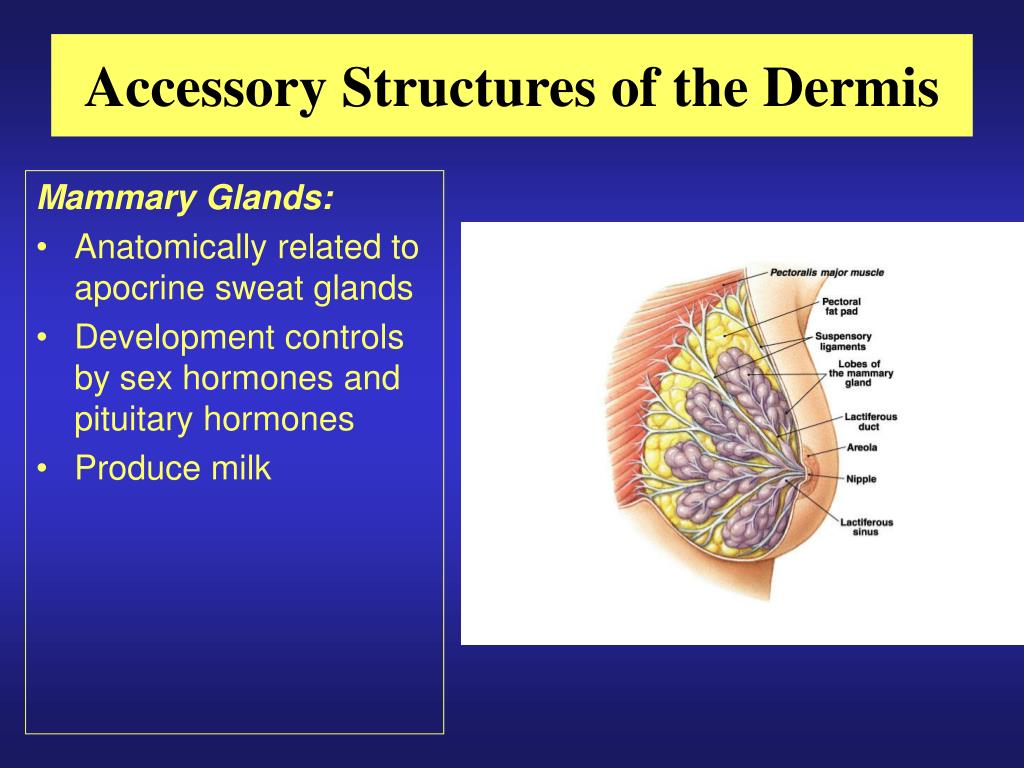 Crowe DJ, Helvie MA, Wilson TE. Breast infection. Mammographic and sonographic findings with clinical correlation. Invest Radiol. 1995;30:582–587. doi: 10.1097/00004424-199510000-00003. [PubMed] [CrossRef] [Google Scholar]
Crowe DJ, Helvie MA, Wilson TE. Breast infection. Mammographic and sonographic findings with clinical correlation. Invest Radiol. 1995;30:582–587. doi: 10.1097/00004424-199510000-00003. [PubMed] [CrossRef] [Google Scholar]
42. Reddin A, McCrea ES, Keramati B. Inflammatory breast disease: mammographic spectrum. South Med J. 1988;81:981–984. 988. doi: 10.1097/00007611-198808000-00010. [PubMed] [CrossRef] [Google Scholar]
43. Muttarak M. Abscess in the non-lactating breast: radiodiagnostic aspects. Australas Radiol. 1996;40:223–225. doi: 10.1111/j.1440-1673.1996.tb00390.x. [PubMed] [CrossRef] [Google Scholar]
44. Kamal RM, Hamed ST, Salem DS. Classification of inflammatory breast disorders and step by step diagnosis. Breast J. 2009;15:367–380. doi: 10.1111/j.1524-4741.2009.00740.x. [PubMed] [CrossRef] [Google Scholar]
45. Gurleyik G, Aktekin A, Aker F, Karagulle H, Saglamc A. Medical and surgical treatment of idiopathic granulomatous lobular mastitis: a benign inflammatory disease mimicking invasive carcinoma.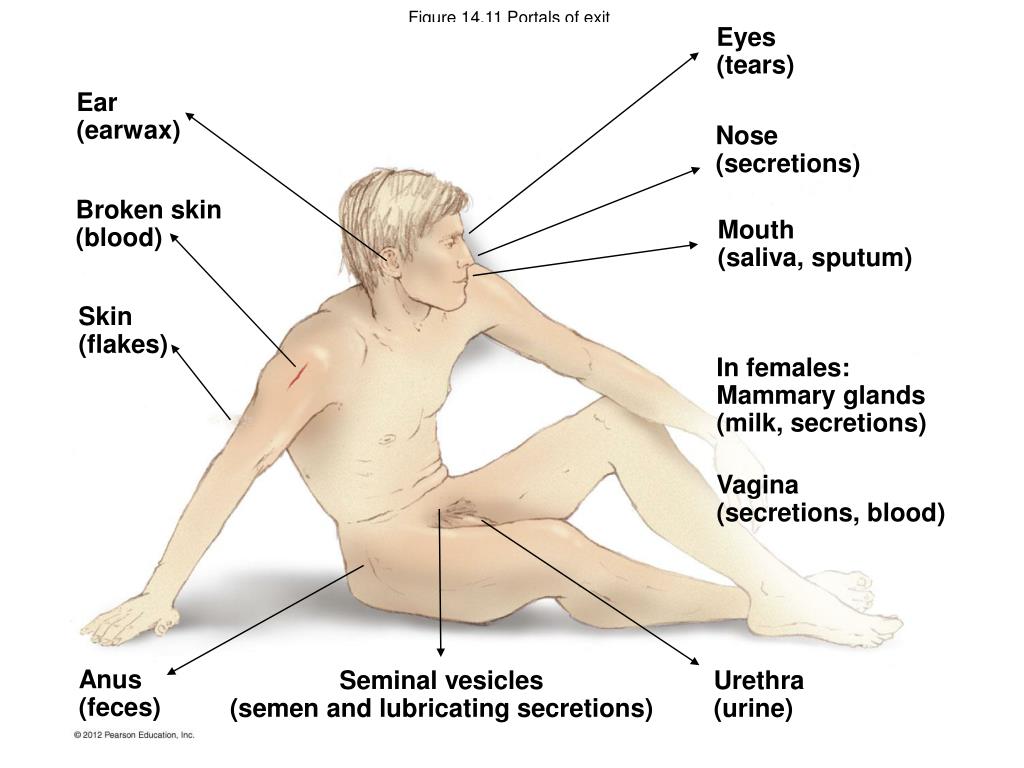 J Breast Cancer. 2012;15:119–123. doi: 10.4048/jbc.2012.15.1.119. [PMC free article] [PubMed] [CrossRef] [Google Scholar]
J Breast Cancer. 2012;15:119–123. doi: 10.4048/jbc.2012.15.1.119. [PMC free article] [PubMed] [CrossRef] [Google Scholar]
46. Karstrup S, Solvig J, Nolsoe CP, Nilsson P, Khattar S, Loren I, Nilsson A, Court-Payen M. Acute puerperal breast abscesses: US-guided drainage. Radiology. 1993;188:807–809. doi: 10.1148/radiology.188.3.8351352. [PubMed] [CrossRef] [Google Scholar]
47. O’Hara RJ, Dexter SP, Fox JN. Conservative management of infective mastitis and breast abscesses after ultrasonographic assessment. Br J Surg. 1996;83:1413–1414. doi: 10.1002/bjs.1800831028. [PubMed] [CrossRef] [Google Scholar]
48. Tan SM, Low SC. Non-operative treatment of breast abscesses. Aust N Z J Surg. 1998;68:423–424. doi: 10.1111/j.1445-2197.1998.tb04791.x. [PubMed] [CrossRef] [Google Scholar]
49. Hook GW, Ikeda DM. Treatment of breast abscesses with US-guided percutaneous needle drainage without indwelling catheter placement. Radiology. 1999;213:579–582. doi: 10.1148/radiology.213.2. r99nv25579. [PubMed] [CrossRef] [Google Scholar]
r99nv25579. [PubMed] [CrossRef] [Google Scholar]
50. Schwarz RJ, Shrestha R. Needle aspiration of breast abscesses. Am J Surg. 2001;182:117–119. doi: 10.1016/S0002-9610(01)00683-3. [PubMed] [CrossRef] [Google Scholar]
51. Ozseker B, Ozcan UA, Rasa K, Cizmeli OM. Treatment of breast abscesses with ultrasound-guided aspiration and irrigation in the emergency setting. Emerg Radiol. 2008;15:105–108. doi: 10.1007/s10140-007-0683-0. [PubMed] [CrossRef] [Google Scholar]
52. Eryilmaz R, Sahin M, Hakan Tekelioglu M, Daldal E. Management of lactational breast abscesses. Breast. 2005;14:375–379. doi: 10.1016/j.breast.2004.12.001. [PubMed] [CrossRef] [Google Scholar]
53. Fahrni M, Schwarz EI, Stadlmann S, Singer G, Hauser N, Kubik-Huch RA. Breast Abscesses: Diagnosis, Treatment and Outcome. Breast Care (Basel) 2012;7:32–38. doi: 10.1159/000336547. [PMC free article] [PubMed] [CrossRef] [Google Scholar]
54. Organisation WH. Causes and management. 2000. Mastitis. [Google Scholar]
55.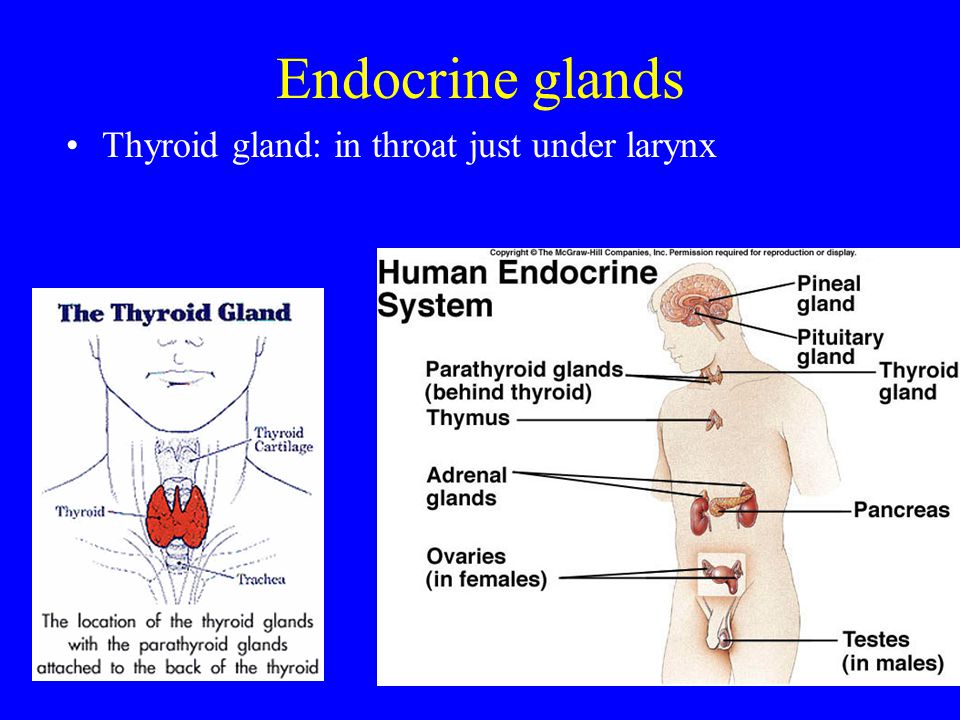 Beechey-Newman N, Kothari A, Kulkarni D, Hamed H, Fentiman IS. Treatment of mammary duct fistula by fistulectomy and saucerization. World J Surg. 2006;30:63–68. doi: 10.1007/s00268-005-0116-8. [PubMed] [CrossRef] [Google Scholar]
Beechey-Newman N, Kothari A, Kulkarni D, Hamed H, Fentiman IS. Treatment of mammary duct fistula by fistulectomy and saucerization. World J Surg. 2006;30:63–68. doi: 10.1007/s00268-005-0116-8. [PubMed] [CrossRef] [Google Scholar]
Breast diseases – treatment in Moscow at the University Clinic of Moscow State University. M.V. Lomonosov
Article rating
1 (Voted: 1)
The mammary glands are a hormone-dependent organ that experiences enormous stress during various biological processes in the female body: menstruation, pregnancy, lactation, menopause. The development of many breast pathologies is associated with hormonal imbalance. Other main causes of breast diseases: genetic predisposition, unhealthy lifestyle, untreated sexual infections, lack of pregnancy, poor environment, stress. However, breast diseases can occur without provoking factors.
Careful monitoring of the condition of the breast is a guarantee that the pathology will be cured without consequences.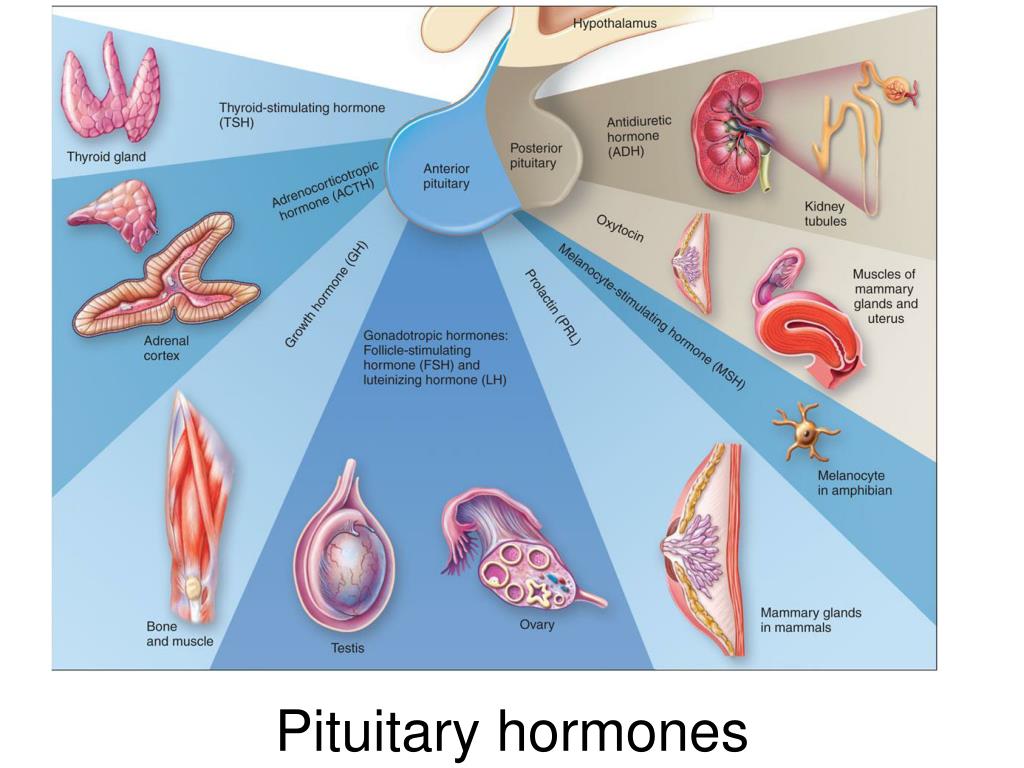 Monthly, you need to do breast palpation on the 5th-10th day of the menstrual cycle – as an independent diagnosis of diseases of the mammary glands. If you find any warning signs, you should contact a mammologist as soon as possible.
Monthly, you need to do breast palpation on the 5th-10th day of the menstrual cycle – as an independent diagnosis of diseases of the mammary glands. If you find any warning signs, you should contact a mammologist as soon as possible.
Breast self-examination
Contents
- Reasons to visit a mammologist
- Classification of diseases of the mammary glands
- Benign diseases of the mammary glands
- Inflammation of the breast (mastitis)
- Oncology (breast cancer)
Reasons to visit a mammologist
Diseases of the female mammary glands may be accompanied by:
- chest pains;
- swelling, heaviness, burning and discomfort in the chest;
- hardening or indrawing in the chest;
- discharge from the nipples;
- deformity, asymmetry of the chest;
- skin color changes;
- cracked nipples.

As a preventive measure for breast diseases after 35 years, women need to undergo ultrasound every year, after 40 years – every 2 years mammography.
It is also advisable to visit a mammologist if pregnancy or oral contraceptives are planned.
Classification of breast diseases
Diseases of the mammary glands in women are divided into three large groups:
- Benign formations (fibroadenoma, mastopathy, cyst, papilloma).
- Inflammation (mastitis).
- Oncology.
Benign diseases of the mammary glands
Fibroadenoma is a tumor that is a round nodule in the chest that, when pressed, can move and cause pain. It occurs due to an imbalance of hormones.
Mastopathy is a disease of the mammary gland, accompanied by the growth of glandular tissues. It occurs due to a malfunction in the work of hormones produced by the ovaries. It is also associated with diseases of the liver and adrenal glands. Pathology is characterized by seals in the chest, discharge from the nipples, redness of the skin.
Pathology is characterized by seals in the chest, discharge from the nipples, redness of the skin.
A cyst is a capsule in which fluid accumulates. It can be single or multiple. It occurs due to excessive production of estrogen, sometimes provoked by diseases of the reproductive system. Cysts are painful when pressed and are palpated as they grow.
Papilloma – an intraductal growth, can also be multiple, occurs due to an imbalance of hormones, pathologies of the reproductive system. Papilloma is well palpable with independent palpation. Pressing on the nipple may release fluid.
Inflammation of the breast (mastitis)
Mastitis is an inflammation that is associated with breastfeeding, when an infection enters the mammary gland through a crack in the nipple. With the stagnation of milk, the inflammatory process is further enhanced. With mastitis, there is acute pain, seals and swelling in the glands, redness of the skin, discharge from the nipples, and a rise in temperature.
Oncology (breast cancer)
Malignant tumor, oncology or breast cancer is a dangerous disease characterized by the uncontrolled division of abnormal cancer cells in the breast. Unlike benign formations, a cancerous tumor does not remain within its structure, but spreads (metastasizes) to others, gradually spreading throughout the body. In the absence of timely treatment, oncological diseases of the mammary glands are fatal.
The main problem in detecting a disease such as breast cancer is that in the first stage, when the prognosis is the most favorable, it is asymptomatic and cannot be palpated. Often, the disease is discovered by chance during preventive examinations, which is why it is so important to undergo ultrasound and mammography.
Our clinic treats diseases of the mammary glands – at any stage and in any degree of neglect. Leave us a request or call to make an appointment.
Ask a question
Inflammation of the mammary glands
Related articles:
Ultrasound of the mammary glands
The structure of the mammary glands
Diagnosis of diseases of the mammary glands
Treatment of diseases of the mammary glands
Major diseases of the mammary glands
Mastitis
Mastitis treatment
Diagnosis of mastitis
Prevention of mastitis
Pain in the breast
Inflammation of the mammary glands
Inflammation of the mammary glands or in other words mastitis is a disease in which an inflammatory process forms in the mammary gland. Often this disease occurs in women of reproductive age.
Often this disease occurs in women of reproductive age.
The occurrence of this inflammation most often occurs in women during lactation. Mastitis is accompanied by pain and fever. Now let’s talk in more detail about the symptoms of the disease.
Symptoms of breast inflammation
The symptoms of mastitis can vary. It all depends on what form of mastitis and the degree of its neglect. Indeed, in the initial stages of the disease, only chest pain may appear. And after a few days, an increase in body temperature, bursting of the chest and its redness may be added. But the main and main symptoms of inflammation of the mammary glands are:
- The chest becomes painful to the touch. The pain can be very severe;
- There may be lumps in the chest. The nature of the compaction varies and depends on the area in which the mastitis occurs;
- Edema forms in the area of inflammation and redness of that place appears;
- Inflammation of the breast often results in fever and swollen lymph nodes.
 If no action is taken, the temperature will rise;
If no action is taken, the temperature will rise; - When feeding a child, a woman experiences unpleasant pain.
If you are breastfeeding and notice tightness and pain in your breasts, do not hesitate. After all, mastitis is a rather serious disease, which, if not treated in time, will lead to bad consequences. That is why it is so important to contact us in time for early diagnosis and detection of inflammatory processes in the chest.
Inflammation of the glands in women
Often this disease occurs during the period when a woman is breastfeeding. This is due to the fact that the child does not drink the milk that is produced by the mother, or the young mother incorrectly attaches the child to the breast. Also, mastitis can develop due to trauma to the nipple. Through cracks and wounds, the infection enters the chest and causes an inflammatory process.
The initial stage of inflammation quickly becomes acute. This is due to the fact that in the postpartum period, the woman’s immunity is weakened and cannot fully resist infections. Often this disease occurs in women who have given birth for the first time. In women who have not given birth, hormonal imbalances can become the causes of inflammation.
Often this disease occurs in women who have given birth for the first time. In women who have not given birth, hormonal imbalances can become the causes of inflammation.
Causes of inflammation
Inflammation of the mammary glands can occur due to various factors. But the main reasons that lead to the occurrence of this disease include:
- Getting into the mammary gland of various infections that penetrate through cracks in the nipples;
- Hypothermia of the whole organism, as a result of which the chest is also supercooled;
- Education in the mammary glands of various tumors. They can be either benign or malignant;
- Lactostasis, which the woman did not finish or started;
- Various injuries of the mammary glands.
Whatever the cause of mastitis, it is important to identify it in time and get rid of this unpleasant disease. This requires the help of qualified doctors. This is exactly what you can get from our center.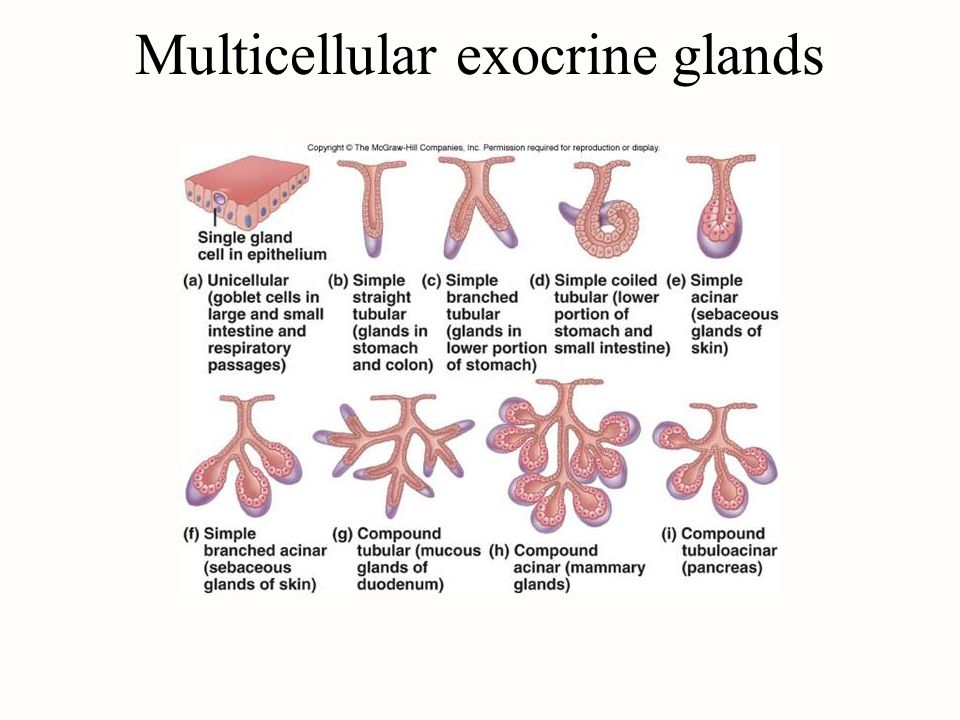

 )
) This information can help your doctor decide what kind of antibiotic to use.
This information can help your doctor decide what kind of antibiotic to use.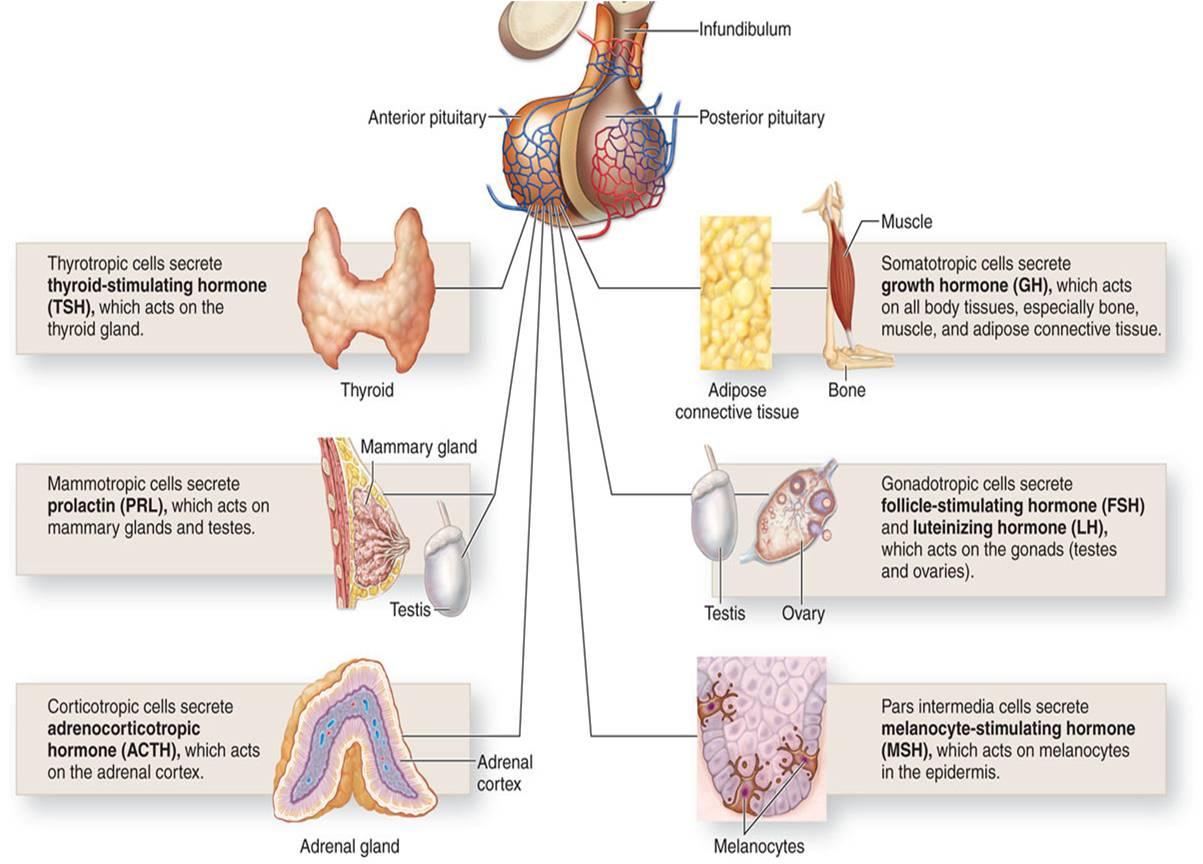 Frequent emptying of the breast prevents engorgement and clogged ducts that can only make mastitis worse.
Frequent emptying of the breast prevents engorgement and clogged ducts that can only make mastitis worse. Dehydration and poor nutrition can decrease milk supply and make you feel worse.
Dehydration and poor nutrition can decrease milk supply and make you feel worse. If the infection spreads or an abscess develops, you may require IV antibiotics or surgical treatment.
If the infection spreads or an abscess develops, you may require IV antibiotics or surgical treatment.
 If no action is taken, the temperature will rise;
If no action is taken, the temperature will rise;